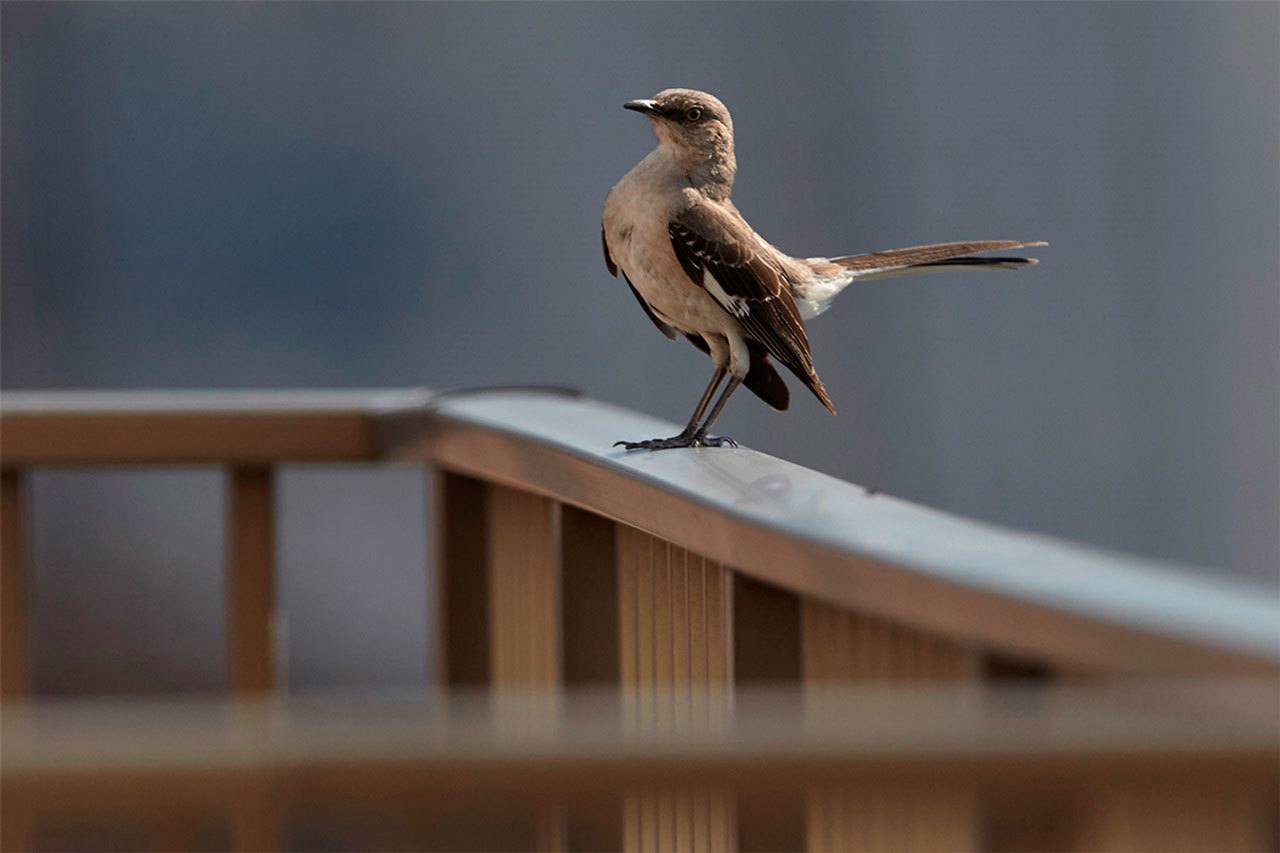Looking at the range map for this bird on different web sites, it becomes apparent this species is on the move. I know them as a bird that seems to constantly sing, morning, noon, and night, sometimes to the dismay of overnight visitors to my former home in California. One bird in particular liked to perch on the struts supporting a metal awning over a guest bedroom window, amplifying the constant song and totally disrupting sleep. Now they are spreading north, with more reports coming in on sightings right here in western Washington.
General Description: The Northern Mockingbird is a slender, upright bird with a small head, long thin bill, long tail, and short, rounded and broad wings. Its upper surface is gray, its belly and breast are light-colored, and the tail is gray with white outer feathers. White patches on the wings are very flashy in flight. Young birds have light spotting on their breast.
Habitat: In Washington, mockingbirds are found mostly in sagebrush habitat on the east side of the Cascades, but they are most often found throughout their traditional range in parks, yards, forest edges, and open fields.
Behavior: Mockingbirds are ground foragers and can be seen running across lawns, flashing their wing patches to declare their territory. Both sexes sing complex songs and mimic other bird songs, often stringing 15 to 20 together and repeating them night and day. They are also found on the highest perches, singing of course, and guarding their territories from other birds. They are often described as being pugnacious and very aggressive in personality. Think Donald Trump.
Diet: Invertebrates, especially beetles, grasshoppers, spiders, snails, and worms, make up most of the diet during the breeding season and in the winter they switch to berries and other fruits. It will be interesting to see how their diet changes as they continue to move farther north in their range. The northern tier is lacking in fruits in winter, though we do have berries on some of our native (and non-native) bushes and trees.
Nesting: The Northern Mockingbird is mostly a year-round resident so their feeding territories are also their breeding territories and fiercely defended, and pair bonds typically last a single breeding season. The male builds a rough foundation of sticks and the female then fashions a cup of weeds, grass, and leaves and lined with rootlets, hair, moss, and plant down. She incubates three to four eggs for 12 to 14 days then broods the hatchlings for another 6 days. Both parents feed the young for another 12 days, then continue to help feed them until they can fly confidently … for up to 3 weeks. Mockingbirds can have up to four broods a year, with the male beginning the second foundation of sticks as soon as the young fledge from the previous nest.
Migration: Most mockingbirds are year-round residents but those that migrate make it even more confusing, with some headed south and some even headed north in the fall and winter.
Conservation Status: Northern Mockingbirds are moving northward with the development of second-growth habitat, suburban landscapes, and ornamental plantings giving them food and shelter.
When and Where to Find in Grays Harbor: So far we have only a few sightings recorded in western Washington, and only three instances of nesting … in Benton and Grant counties. But I fully expect this to change as our Pacific Northwest climate warms and our gardens increase the number of berry and other fruit-bearing offerings for these remarkable birds. I can hardly wait.


